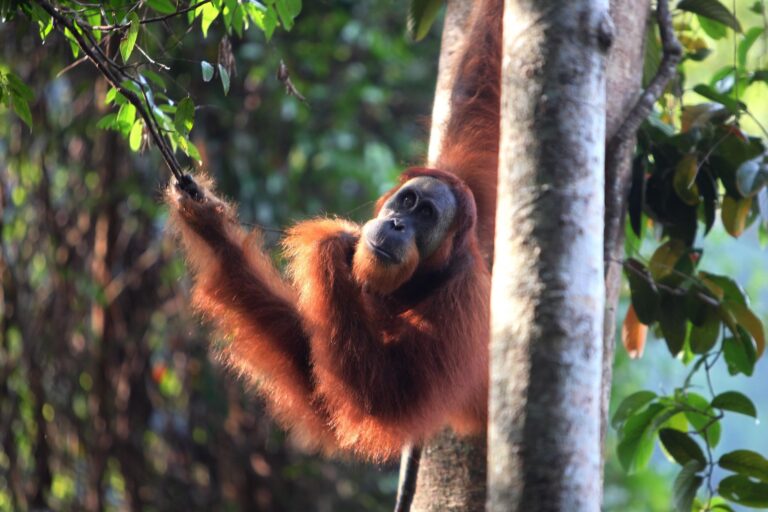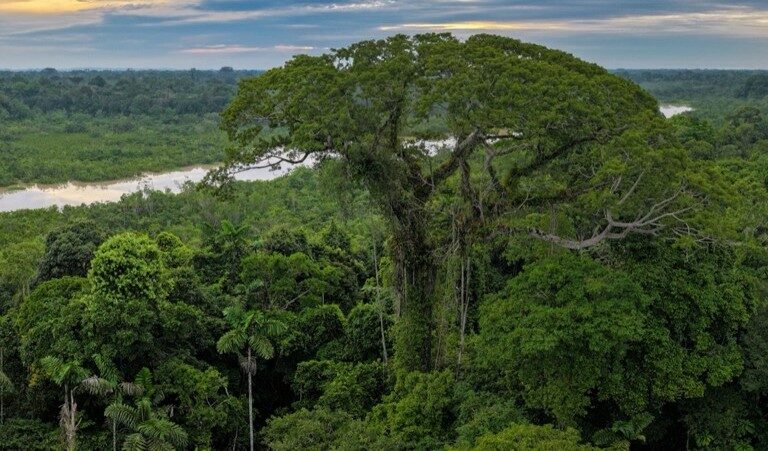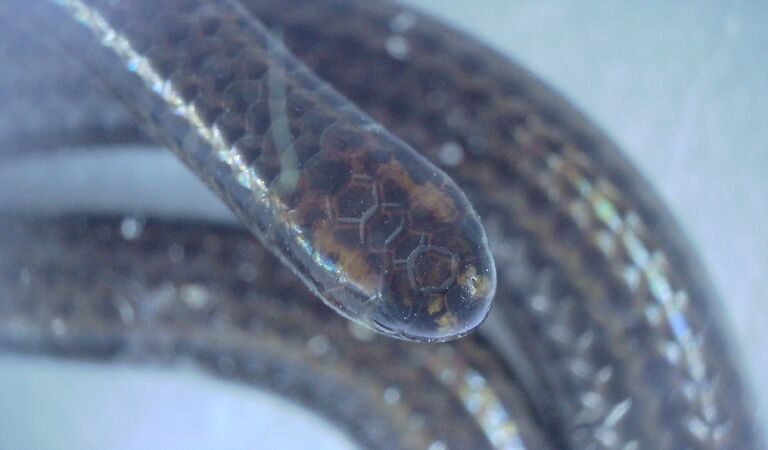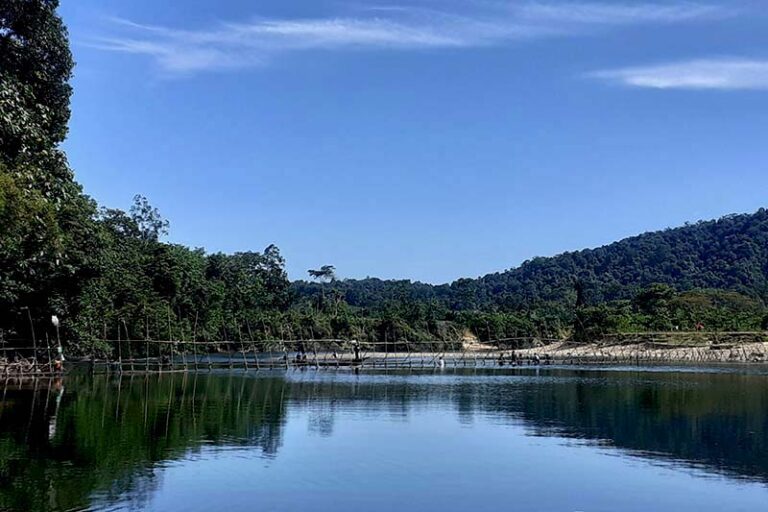- Conservationists in eastern Tanzania have found two specimens of a rare tree feared to be extinct.
- Millettia sacleuxii was only known from six specimens in forest reserves that have almost disappeared.
- Thousands of seeds have been collected and seedlings raised, and these are due to be planted out as part of a reforestation project in the Nguru Mountains.
- The two surviving Millettia “mother trees” were found near an area that conservationists hope to soon turn into a wildlife corridor.
In July 2023, botanist Andrea Bianchi was driving in the Nguru Mountains of eastern Tanzania when the broad pods on a tree growing in a maize field near the road caught his eye. He pulled over and found not one but two Millettia sacleuxii trees, a species scientists had feared was extinct. Thousands of their seeds have since been collected and germinated so that they can be planted as part of a reforestation project.
M. sacleuxii is so rare the tree doesn’t have a common name in English. The local Kihehe language has only a generic name for it and other closely related forest Millettia species found in this region: muhafu.
Scientists previously knew the rare species from just three forest reserves in the Nguru and Usambara mountains. But two of the reserves were cleared decades ago and replaced with exotic timber and sugar plantations. The remaining reserve, near the town of Turiani, has been reduced to around 49 hectares (121 acres) surrounded by encroaching fields of rice and sugar.
“I was really worried about this species and fearing it may have gone extinct,” said Bianchi, the tropical forest restoration expert who spotted the surviving trees near the Mvaji River, not far from Turiani. Somehow they had survived being cut down for poles or firewood, or to make way for crops like most of the forest that once surrounded them.
One was shaded by a large fig, the other, 50 meters (160 feet) away, was crowded around by shrubs and exotic teak, meaning neither had been able to grow to its full size. But the very broad pods on both trees presented him with a unique opportunity to cultivate more.
Hundreds of pods on each tree exploded at the end of the dry season in October, scattering thousands of seeds. Seven thousand seeds were collected and taken to a tree nursery run by Bianchi and conservation group the PAMS Foundation, on the northwestern slopes of Nguru. The Nguru massif is one of a dozen mountain blocks forming a chain known as the Eastern Arc Mountains, and at the nursery near the village of Pemba, the botanist, with help from nursery workers drawn from the local community, sowed the seeds; 5,500 of them germinated into healthy seedlings.


The PAMS Foundation is spearheading a project to regrow parts of Nguru’s rainforest cut down for agriculture in recent decades. Hundreds of thousands of seedlings comprising around 40 different species of rainforest trees have so far been raised and planted out.
Under the project, farmers from two local villages can rent out small portions of their farms to the conservation group to grow trees on, and the foundation is working on getting the project registered on the voluntary carbon market.
The Millettia trees whose seedlings were planted in April will be “a very special element of the reforestation project,” says PAMS Foundation co-director Michele Menegon.
M. sacleuxii was first described for science 120 years ago, named in honor of French missionary and botanist Charles Sacleux, but the trees were only ever known from a handful of live specimens. Given the virtual disappearance of the forest reserves that once harbored them, the discovery of two survivors outside any reserve, and the cultivation of thousands of their seedlings, means the species has been rescued from the threat of extinction.
The only other person to record the trees this century was veteran Tanzanian botanist Moses Mwangoka. That was back in 2004 in Dunduma, the tiny fragment of a forest reserve now surrounded by ever-encroaching rice and cane fields near Turiani.
He told Mongabay there’s a “50-50” chance there are any Millettia left there. “Many people were cutting it and when I got there, there were very few trees,” he recalled. “I hope, maybe, it is still there,” he added, but noted that Millettia wood is durable and attractive to those who require good timber.
Mwangoka said he plans to return to Dunduma soon to find out if any Millettia have survived.
Bianchi, who made a very brief visit to Dunduma recently, didn’t find any Millettia, but he did find the forest reserve under immense pressure from people searching for firewood and timber.
“It is just a drop of forest in a sea of cultivation,” he said. “I really hope [M. sacleuxii] is there so we can collect more seeds, or if not seeds, collect pollen.”
The pollen will be important. Around 1% of the Millettia seedlings Bianchi and colleagues grew in the nursery at Pemba lacked chlorophyll, the pigment in plants that gives leaves their green color and helps them to absorb sunlight, create nutrients and grow.
The lack of chlorophyll, known as plant albinism, is usually a sign of inbreeding caused by lack of genetic diversity due to a small, isolated breeding population.
“Even though we may have saved the species,” Bianchi said, “the genetics are always a worry.”
Significantly, the site where Bianchi found his two Millettia is near where the PAMS Foundation plans to soon begin restoring forest within a “wildlife corridor” around 0.5 kilometers (0.3 miles) wide. The corridor will connect the Nguru Mountains with Kanga, a reserve protecting around 7,000 hectares (17,300 acres) of intact forest on a separate massif around 5-10 kilometers (3-6 mi) to the north-east.


When Mongabay visited the site of the planned corridor last year, towering trees with strikingly white bark known as tall sterculias (Sterculia appendiculata), or mfune in Swahili, stood as reminders of what equally mighty trees had once stood beside them. The sterculias had only survived in this area of cultivated land and degraded forest because their soft wood is good for neither firewood nor timber.
The new corridor will include riparian, or riverine, forest that could entice species such as marsh mongooses (Atilax paludinosus) and near-threatened African clawless otters (Aonyx capensis) back to the riverbanks, Menegon said.
Other animals the conservation group is keen to see make a comeback include Abbott’s duiker (Cephalophus spadix), a small, endangered, forest-dwelling antelope unique to Tanzania that hasn’t been seen in this area for years.
The forest corridor could even encourage savanna elephants (Loxodonta africana) back from wildlife-rich regions to the north and west of Kanga, decades after they disappeared from Nguru.
“Kanga has a healthier population of larger mammals [while] Nguru has been really hammered in terms of poaching,” Menegon said. “The idea is that Kanga could serve as a source [for Nguru].”
Helping them achieve these goals will be habitat restoration using seedlings raised in the group’s nurseries. Menegon said he hopes that in addition to the newly found Millettia, other species may one day include those yet to be described.
“The Nguru [massif] is still so poorly known that we also think that sooner or later we will be having in the nursery trees undescribed or new to science along with the Millettias, so that’s quite exciting,” he said.
From cardamom to carbon: Bold new Tanzanian project is regrowing a rainforest
Banner Image : Tending M. sacleuxii seedlings at the PAMS Foundation nursery in the Nguru Mountains, Tanzania. Image courtesy Andrea Bianchi.
FEEDBACK: Use this form to send a message to the author of this post. If you want to post a public comment, you can do that at the bottom of the page.














